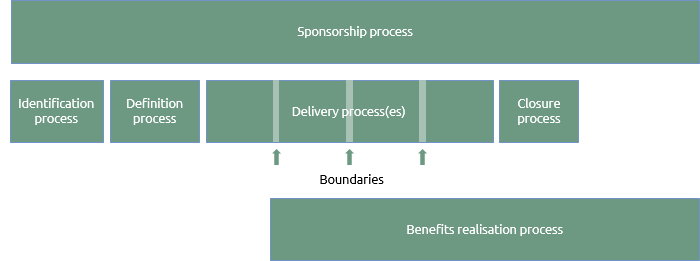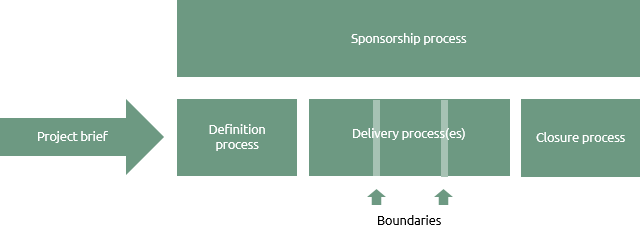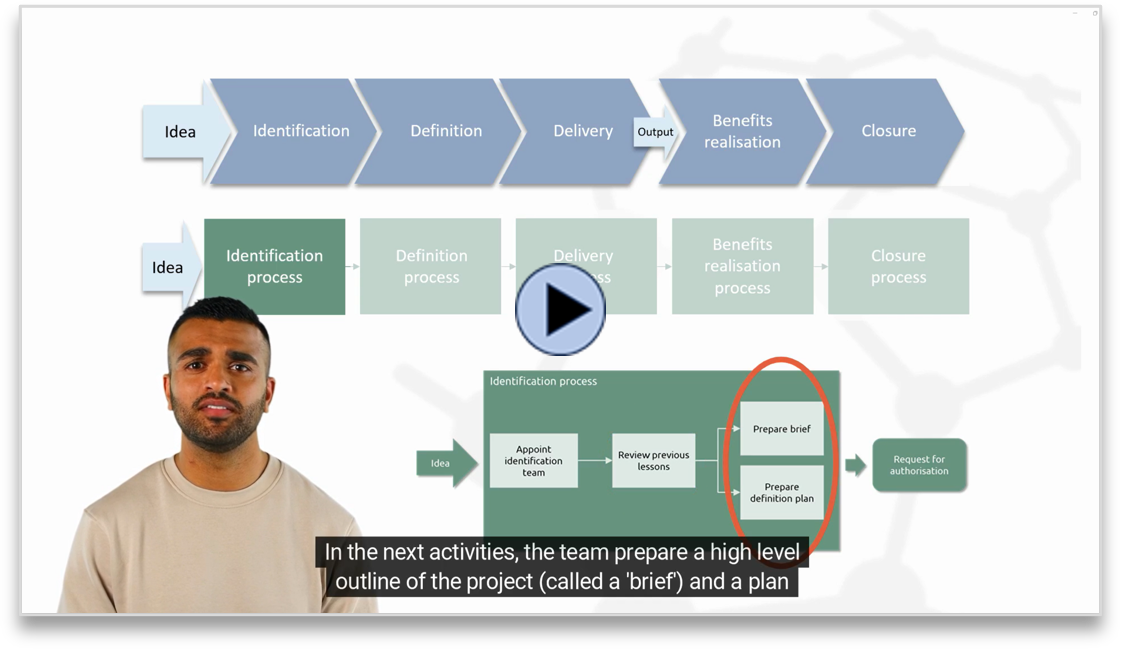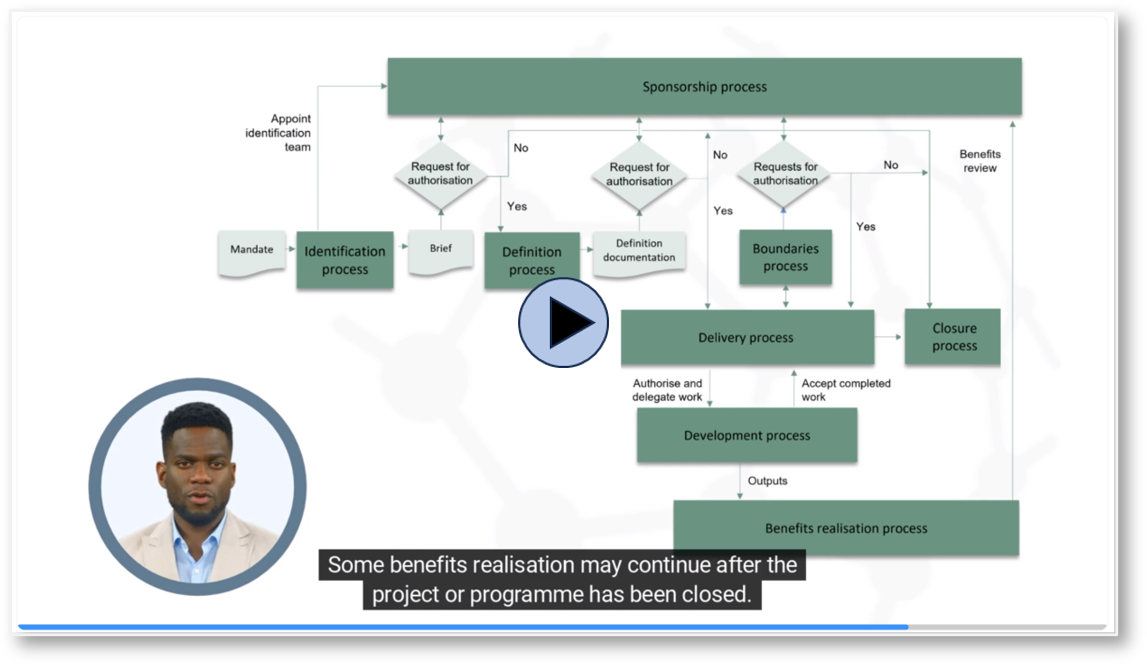These explainer videos support and expand upon the ideas in this topic. Click on a screenshot to view. | |
From life cycle to process model | Process model overview |
The generic process model for both projects and programmes is based on life cycle phases with an additional process to address the sponsorship function. All these can, and should, be tailored to the specific context of the work. Each process is supported by competence and maturity definitions that remain relevant even if the Praxis process is replaced with a corresponding process from another guide such as PRINCE2® or ISO21500.
As the scope of the work becomes more complex its primary impact is on the delivery phase. Hence, the reference to multiple delivery process(es) in the diagram below. Where the delivery work is delegated to multiple production teams the development process can also be used and where the delivery phase needs to be segmented into stages or tranches, the boundaries process is required.
Just as functions in the knowledge section have an explanation of how they vary according to increasing complexity, each project and programme process has information about its application in situations ranging from small non-complex projects to large complex programmes.
Click on the components of the diagram for more detail

This generic model should be adapted in accordance with the context of a project or programme. For example, where a project is part of a programme, the benefits realisation process will usually be performed by the programme. The project identification may also be done at programme level resulting in a reduced set of processes for the project as shown below.
Click on the components of the diagram for more detail

A similar approach could be taken for a project or programme that is part of a portfolio. The primary difference between a project and a programme is the complexity of the objectives and this is reflected in the relationship between the delivery process(es) and the benefits realisation process.
The generic model can also be adapted for different environments. For example, where a contracting organisation is delivering a project on behalf of a client organisation the client may perform the identification and benefits realisation processes. They may also perform much of the definition process.
Click on the components of the diagram for more detail

The process model for the contracting organisation would then be limited to the elements shown in darker colour in the figure above.







